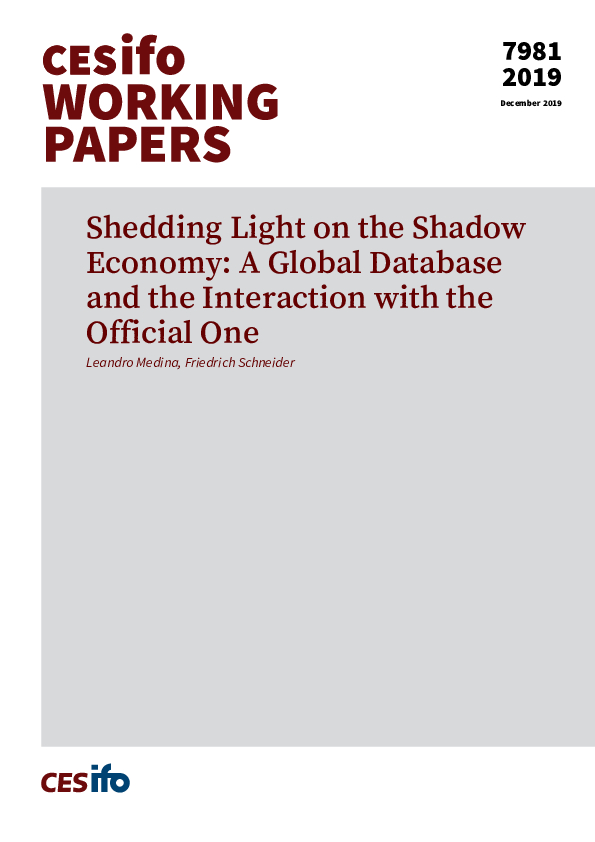Shedding Light on the Shadow Economy: A Global Database and the Interaction with the Official One
CESifo, Munich, 2019
CESifo Working Paper No. 7981

Using the multiple indicator-multiple cause (MIMIC) approach, this paper generates a novel global database by estimating the size of the shadow economy for 157 countries over 1991 to 2017. The results suggest that the OECD countries are by far the lowest with values below 20% of off official GDP and the shadow economy is larger in Latin America and Sub-Saharan Africa, averaging almost 38 and 39 percent of GDP, respectively. The average over all countries and over 1991 to 2017 is 30.9 %. What is really remarkable, that the average decline of the shadow economy from 1991 to 2017 is 6.8 percentage points. The shadow economy is particularly large in countries such as Bolivia (Georgia) with 62.9(61.7) percent of GDP, and low in countries such as Switzerland(United States) with 6.4 (7.6) percent of GDP, on average. Robustness tests include the use of satellite data on night lights intensity as a proxy for the size of countries’ economies and the comparison of the results with 23 countries national statistical offices’ measures of informality (discrepancy method used) demonstrate stable and similar results. Finally the interaction of the shadow economy with the official one is investigated. Theoretically the effect of the shadow economy on the official is an open question; first results of this interaction in Pakistan over 1976 to 2015 show a negative (positive) effect in the short (long) run.
Public Finance
Public Choice